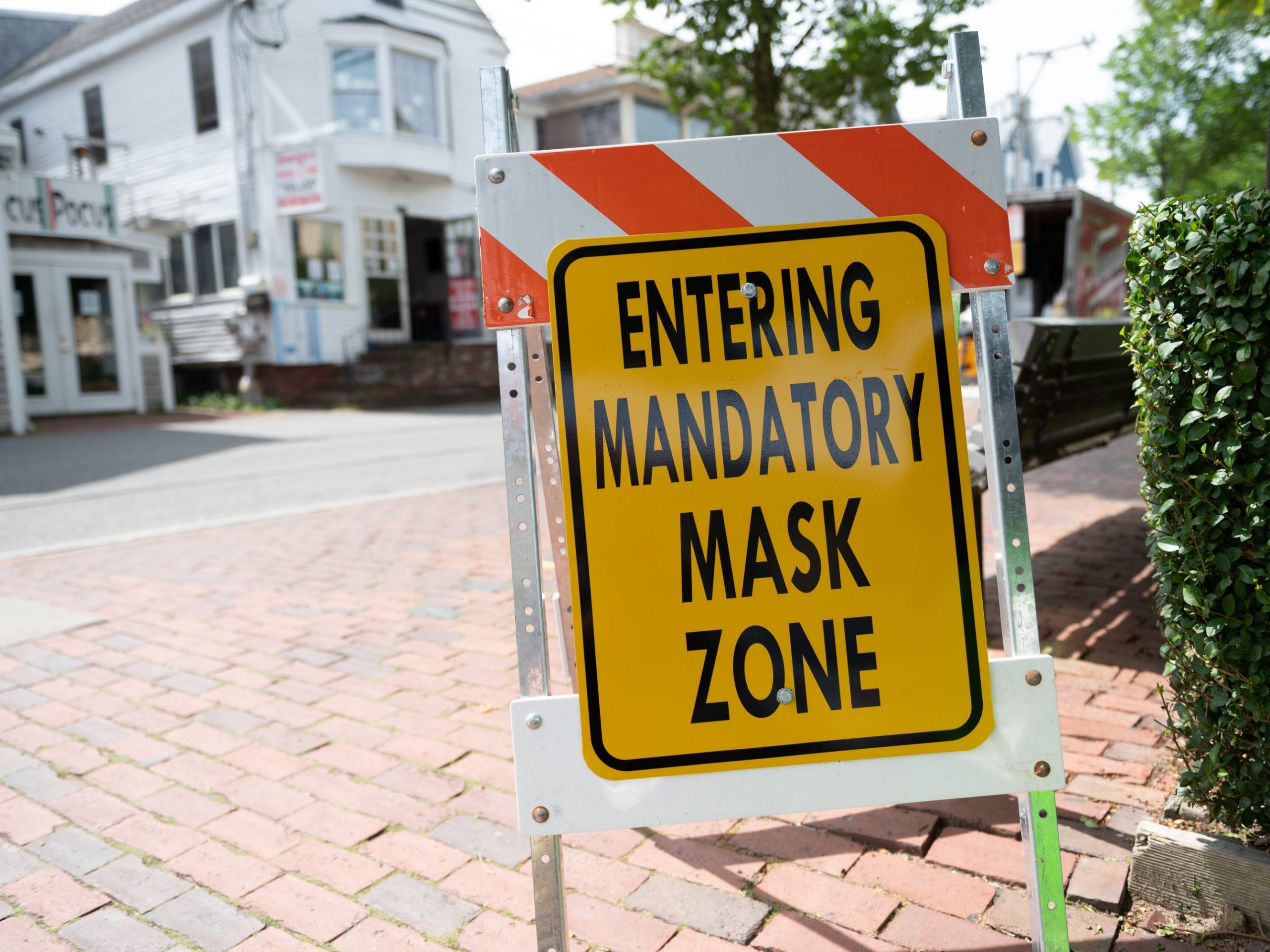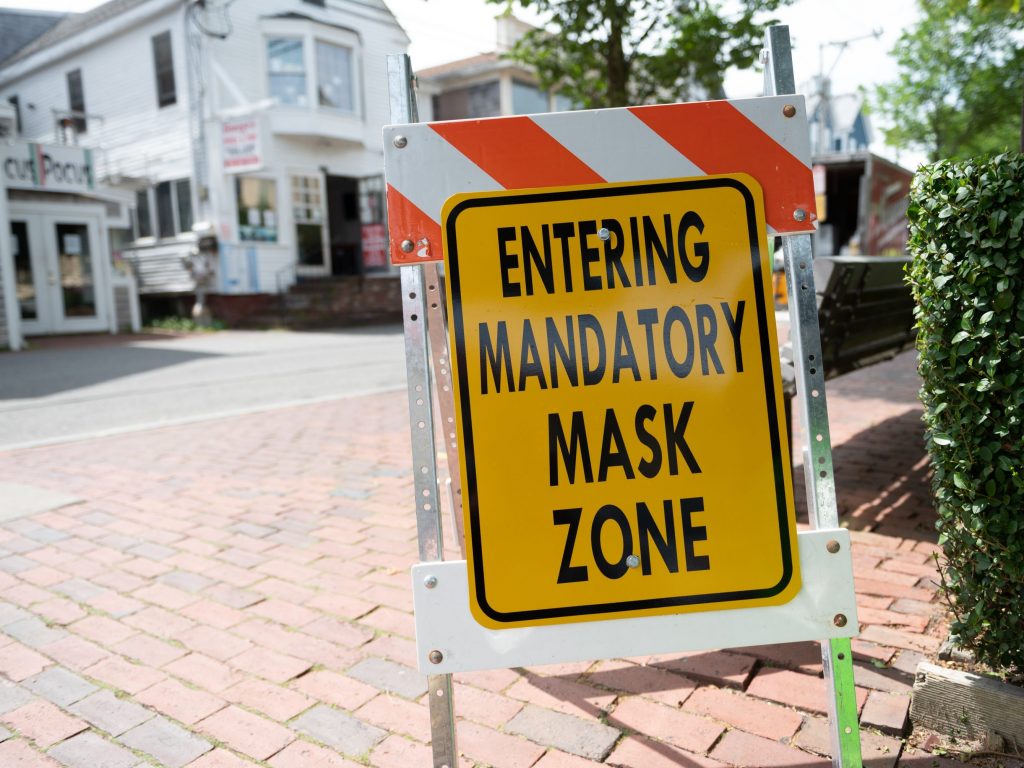
Zach D Roberts/NurPhoto/ Getty Images
- Masks were a warranted, temporary intervention before we had a highly effective vaccine for COVID.
- Now a large majority of the most vulnerable are vaccinated, making COVID much less deadly.
- The time for "back to normal" is now – COVID isn't going away, but we can manage it with vaccines.
- This is an opinion column. The thoughts expressed are those of the author.
- See more stories on Insider's business page.
I was not in Provincetown over July 4.
I was there for a couple of hours on July 2 – I spent the holiday weekend with family nearby and drove up to Provincetown for a visit on a rainy day – and during that brief visit it seemed everywhere I went I found gays I know from New York or California. The town was crowded. And with the rainy weather, all anyone could talk about was how long the lines were to get into the already-crowded bars.
After the weekend, it seemed like all people could talk about was how many people had gotten COVID in Provincetown over the 4th. And now, unfortunately, all of you are talking about this. But the Centers for Disease Control and Prevention's report on the Provincetown COVID cluster – 469 cases in Massachusetts residents, 76% of them in vaccinated individuals – is one of the key pieces of evidence that has led the agency to shift its tune on Delta toward more alarm, especially for the vaccinated.
But the environment in Provincetown over July 4 was roughly what you would have designed if you were trying to come up with a maximally efficient environment to spread COVID to the vaccinated. If this is what happens when things go wrong with vaccinated people, that's an excellent story about vaccines.
As Andrew Sullivan described in his Friday newsletter, Provincetown really is a town, not a city. But tens of thousands of people cram into it on peak summer weekends, partying in small, cramped venues with low ceilings and often poor ventilation. Weather over July 4 weekend was dreary (it was 57 degrees with rain during my brief visit) which made indoor venues both more popular and more crowded than usual.
People were also making out with each other, I am told.
And yet, despite all that, the Provincetown cluster has led to a total of seven hospitalizations and zero deaths, according to town manager Alex Morse. Case rates and positivity rates in the town are falling. This is another demonstration that, for vaccinated people, the best evidence we have is that COVID really is "just the flu" or even less serious than the flu - despite the fact that breakthrough cases sometimes arise.
The vaccinated have no moral obligation to save the unvaccinated from themselves
The primary risk that remains in this pandemic is to people who have chosen not to get vaccinated. I'm disappointed that the FDA has taken so long to approve vaccines for children under 12, but fortunately COVID cases are disproportionately mild in children - only about 500 people under 18 have died from COVID in the US during the entire pandemic. And if adults want to take the risk of getting COVID without a vaccine, that's on them.
But most of the people at the greatest risk from COVID have chosen to get vaccinated, including the 90% of the seniors in the US who have gotten at least one shot. Disproportionate vaccination of the most vulnerable is a reason the recent surge in COVID cases is not producing a proportionate number of hospitalizations and deaths compared to prior waves - a trend we have seen in the UK, which got hit with Delta before the US.
I supported masking rules before vaccines were widely available, because they appeared to be one of the best tools we had. That said, they weren't that good a tool - there's a reason you need a statistical model to see the benefits produced by mask rules, while the benefits of the vaccine are easily visible on a map.
In most states, hospitalization rates remain way, way below the highest levels reached in the waves last summer and this past winter. As a result, in the vast majority of the country, the need to protect hospital capacity - one of the key justifications for the restrictions imposed last year and earlier this year - is not a reason to reintroduce social distancing measures.
Some states in the southeast, especially Florida, are exceptions. But perversely, the return to mask mandates and other non-pharmaceutical interventions has little political support there and much more support in places that don't need them, like the northeast.
Bill de Blasio is right
The CDC has encouraged that even vaccinated people return to wearing masks in public indoor settings where there is "substantial or high transmission" of COVID, a designation that currently applies to most of the country.
Washington, DC, and Los Angeles County, among other municipalities, have turned this guidance into a mandate, and Governor Andrew Cuomo has urged localities in New York to do the same if CDC guidance applies to them, which it does for New York City and some suburban counties. (Because the governor's emergency powers related to COVID have lapsed, that decision now lies with New York City Mayor Bill de Blasio and other local officials, not with Cuomo.)
In a press briefing Monday, de Blasio emphasized that "overwhelming strategic thrust" of his approach to fight the new COVID wave is vaccination because vaccines are by far the most effective intervention we have available. He does not want to send a message that masks can be a substitute for vaccines. So while he encouraged vaccinated people to voluntarily mask up indoors when around the unvaccinated, he declined to impose a new requirement, saying this did not align with the city's strategy of placing vaccination at the center of the response.
And he was undeterred in emphasizing that New York is back in business, with concerts and festivals and public art and all the in-person activities that make our city such a great place to gather.
What de Blasio's approach underlines is that non-pharmaceutical interventions are costly. Closures and capacity limits are especially costly, but mask mandates are costly too, especially if you intend to enforce them - for the mandate to work, both the city and private organizations within the city would have to devote extensive manpower to enforcing compliance.
A mandate would also undermine the "back in business" message that is important for getting New Yorkers back to work and school, and to fully recover the city's employment and tax base. Getting back to normal is essential for the well-being of not just New York's economy but of its people who have given up so much for the last 16 months, and the mayor is right to prioritize that.
My face is my business again
One unfortunate side effect of a deadly pandemic is that it makes pious busybodies right about a lot of things and gives them good reasons to harangue the rest of us. Fortunately, as this pandemic has gotten far less deadly in the US, we can go back to ignoring the busybodies. Sometimes the busybodies even ignore themselves: DC mayor Muriel Bowser, who imposed one of the mask mandates this past weekend, didn't wait 24 hours to violate it.
The thing about the new demands for the vaccinated to mask up is that the benefit of masks has sharply declined with the effective vaccines (a vaccinated person is much less likely to get COVID and therefore much less likely to spread it) but the cost of masking remains.
Masks are one of the factors that has inhibited our social interactions, depriving us of the ability to see each other's faces. Mask rules are also likely to discourage business at restaurants and stores and airlines, prolonging the economic and jobs crisis. And any ramp-up of social distancing rules is likely to give fuel to teachers unions' and other campaigners that would seek to provide anything other than full, in-person, five-day instruction to all students this fall. (Fortunately, the president has been saying the right things about this last point.)
But there is also the issue of personal liberty and the expansion of the zones of behavior that nosy scolds feel free to intrude on. My face is mine, and absent a really good reason, you should mind your own business instead of telling me what to do with it. The highly effective vaccines have downgraded your reason for telling me otherwise from "really good."
The new normal is here
From March of last year roughly through this April, the story about COVID restrictions was clear: Follow these rules now to protect yourself and avoid spreading the virus, and more of us will live until a later time when activities will be safer and we can return to normal.
There is no longer anything obvious that makes "later" safer than "now." So if you're talking about the need to modify the way society works to stop the spread of COVID, you are fundamentally talking about doing that indefinitely.
Whether it's a good idea to impose indefinite restrictions is not a question for "the experts." They can only provide one component of the cost-benefit equation: How much illness a given policy will generate. (And frequently, they've gotten that one wrong, anyway.) It's up to the rest of us to evaluate what indefinite restrictions we're willing to endure to affect that outcome - just as we do with other risks we don't fight to zero, like auto accidents and alcohol-related deaths and heart disease and, yes, influenza.
People want to get back to the things they love. For some people, that's partying in a sweaty basement in Provincetown where you might get a cold, or COVID. We had good reason to take that away from them last year. But now it's time to let people get back to their lives. Even if some of them might get sick.
Dit artikel is oorspronkelijk verschenen op z24.nl

